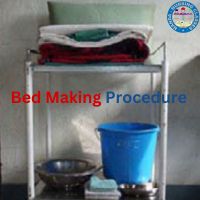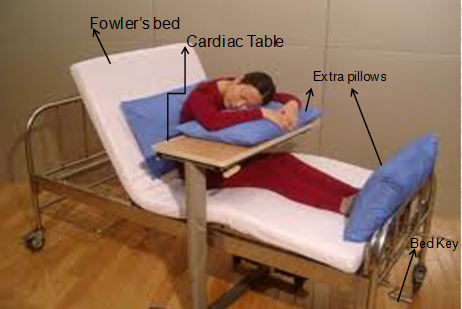Tracheostomy Care Introduction
Tracheostomy care is a fundamental aspect of nursing practice, particularly for patients who require assistance with breathing due to various medical conditions. As nursing students, it is crucial to gain proficiency in tracheostomy care to provide optimal support and ensure patient safety.
A tracheostomy is a surgical procedure that involves creating an opening in the trachea (windpipe) to facilitate breathing. This opening, known as a stoma, is typically maintained with the insertion of a tracheostomy tube. Nursing students must understand the importance of proper tracheostomy care to prevent complications such as infection, airway obstruction, and skin breakdown.
This guide aims to introduce nursing students to the essential principles and procedures involved in tracheostomy care. By learning about tracheostomy tube management, suctioning techniques, dressing changes, and patient education, nursing students can develop the necessary skills to provide comprehensive care for patients with tracheostomies.
Throughout this guide, emphasis will be placed on safety protocols, infection control measures, and effective communication with patients and their caregivers. Tracheostomy care requires attention to detail, critical thinking, and a compassionate approach to meet the unique needs of each patient.
By mastering tracheostomy care, nursing students can play a vital role in improving patient outcomes and enhancing the quality of life for individuals with tracheostomies. Let’s explore the key components of tracheostomy care together to better understand this essential nursing intervention.
Tracheostomy Definition
A tracheostomy is an artificial opening make in the trachea into which a tube is inserted to establish and maintain a patient airway.
Tracheostomy Care Definition
Tracheostomy care refers to the specialized nursing procedures and interventions aimed at maintaining the health and functionality of a tracheostomy, a surgically created opening in the trachea (windpipe) to assist with breathing. This care involves the management of the tracheostomy tube, suctioning of secretions, cleaning the stoma site, monitoring for complications, and providing patient education and support. Tracheostomy care is essential for individuals who require prolonged mechanical ventilation or have conditions affecting their ability to breathe independently.
Tracheostomy Care Purpose
| S.No. | Purpose | Description |
|---|---|---|
| 1. | Maintaining Airway Patency | Tracheostomy care aims to ensure the tracheostomy tube remains clear of obstructions, allowing for adequate airflow and effective breathing support. |
| 2. | Preventing Infections: | Proper tracheostomy care involves sterile techniques to minimize the risk of infection at the stoma site and within the respiratory tract, reducing the likelihood of complications such as pneumonia. |
| 3. | Promoting Skin Integrity | Nursing interventions in tracheostomy care focus on preventing skin breakdown around the stoma site by keeping the area clean, dry, and properly dressed. |
| 4. | Facilitating Secretion Management | Regular suctioning and cleaning of the tracheostomy tube help remove respiratory secretions, preventing buildup that can obstruct airflow and lead to respiratory distress. |
| 5. | Ensuring Tube Functionality | Nursing students learn to assess and troubleshoot tracheostomy tube function, including proper placement, cuff inflation, and securement, to ensure optimal breathing support for the patient. |
| 6. | Monitoring Respiratory Status | Tracheostomy care involves monitoring the patient’s respiratory rate, oxygen saturation, and breath sounds to detect any signs of respiratory distress or tube malfunction promptly. |
| 7. | Providing Patient Education | Nursing students educate patients and caregivers about tracheostomy care procedures, signs of complications, and appropriate responses to emergencies, empowering them to participate in their care and promote safety. |
| 8. | Enhancing Comfort and Quality of Life | By providing thorough and compassionate tracheostomy care, nursing students contribute to the overall comfort and well-being of patients with tracheostomies, promoting a higher quality of life during their recovery journey. |

Tracheostomy Care scientific principal
The scientific principles underlying tracheostomy care are rooted in respiratory physiology, infection control, and wound management. These principles guide nursing practice to ensure the maintenance of airway patency, prevention of complications, and promotion of patient well-being. Key scientific principles of tracheostomy care include:
- Airway Management: Tracheostomy care prioritizes the maintenance of a clear and patent airway to facilitate effective breathing and gas exchange. This involves regular monitoring of the tracheostomy tube placement, ensuring proper cuff inflation (if applicable), and suctioning to remove secretions and prevent airway obstruction.
- Infection Prevention and Control: Tracheostomy care adheres to strict infection control practices to minimize the risk of respiratory infections and complications. This includes aseptic techniques during tracheostomy tube changes, wound care, and suctioning procedures to prevent contamination and reduce the risk of infection.
- Respiratory Physiology: Understanding the physiology of respiration is essential for effective tracheostomy care. Nursing professionals must have knowledge of lung anatomy, gas exchange mechanisms, and the impact of respiratory conditions on breathing to provide appropriate interventions and support.
- Mucociliary Clearance: Tracheostomy care supports the body’s natural mucociliary clearance mechanism, which helps remove mucus and foreign particles from the airways. Suctioning and humidification are key components of tracheostomy care to facilitate mucociliary function and prevent mucus buildup.
- Skin Integrity: Proper wound care and skin management are crucial in tracheostomy care to prevent skin breakdown and infection around the stoma site. Nursing interventions include regular assessment of skin integrity, gentle cleansing, and application of appropriate dressings to promote healing and prevent complications.
- Respiratory Assessment: Nursing professionals perform ongoing respiratory assessments to monitor the patient’s respiratory status and detect any signs of respiratory distress or complications. This includes assessing respiratory rate, oxygen saturation, breath sounds, and signs of respiratory distress.
- Patient Education: Patient and caregiver education are integral components of tracheostomy care. Nursing professionals provide comprehensive instruction on tracheostomy care procedures, equipment management, signs of complications, and strategies for self-care and emergency management to empower patients and promote their safety and well-being.
Tracheostomy Care Indications
- Respiratory Failure: Tracheostomy placement may be indicated for patients experiencing respiratory failure due to conditions such as acute respiratory distress syndrome (ARDS), chronic obstructive pulmonary disease (COPD), or neuromuscular disorders.
- Prolonged Mechanical Ventilation: Patients requiring prolonged mechanical ventilation, typically longer than 7-14 days, may benefit from a tracheostomy to facilitate weaning from ventilatory support and reduce the risk of complications associated with endotracheal intubation.
- Airway Obstruction: Tracheostomy may be indicated in cases of upper airway obstruction due to tumors, trauma, or anatomical abnormalities, where traditional endotracheal intubation is ineffective or contraindicated.
- Facilitation of Secretion Management: Tracheostomy placement can assist in the management of excessive respiratory secretions, commonly seen in patients with neuromuscular disorders or those at risk of aspiration pneumonia.
- Facilitation of Pulmonary Toilet: Tracheostomy allows for easier access to perform pulmonary toilet procedures such as suctioning, bronchial hygiene, and lung recruitment maneuvers, promoting airway clearance and lung expansion.
Contraindications:
- Unstable Hemodynamics: Tracheostomy placement may be contraindicated in patients with unstable hemodynamics, severe hypoxemia, or profound coagulopathy, as the procedure carries risks of bleeding, hypotension, and cardiovascular compromise.
- Uncontrolled Infection: Active infection at the proposed tracheostomy site or systemic infection may be contraindications to tracheostomy placement due to the risk of exacerbating the infection or introducing pathogens into the lower respiratory tract.
- Unfavorable Anatomy: Anatomical abnormalities or pathology that preclude safe tracheostomy placement, such as severe neck trauma, extensive neck surgery, or distortion of the airway anatomy, may be contraindications to the procedure.
- Patient or Family Opposition: Tracheostomy placement may be contraindicated if the patient or their family refuses consent for the procedure, or if there are ethical or cultural considerations that preclude its implementation.
- Lack of Medical Benefit: In some cases, tracheostomy placement may not offer significant medical benefit or may be unlikely to improve the patient’s prognosis or quality of life, making it inappropriate to pursue the procedure.
Understanding the indications and contraindications for tracheostomy placement is essential for nursing students to participate in the decision-making process, provide informed patient education, and deliver safe and appropriate care to patients undergoing or living with a tracheostomy.
Articles Used in Tracheostomy Care
| S.No. | Articles | Purposes |
|---|---|---|
| 1. |
Tracheostomy Tube |
The tracheostomy tube is the central component of tracheostomy care. It comes in various sizes and designs, including cuffed and uncuffed tubes, fenestrated tubes for speech, and tubes with inner cannulas for easy cleaning. The choice of tube depends on the patient’s condition and needs |
| 2. |
Suction Catheters |
Suction catheters are essential for clearing respiratory secretions from the tracheostomy tube and airway. They come in different sizes and lengths to accommodate varying patient needs. Sterile suction catheters are used to maintain asepsis during suctioning procedures. |
| 3. |
Suction Machine or Wall Suction |
A suction machine or wall suction unit is used to generate negative pressure for suctioning respiratory secretions. It is equipped with tubing, a vacuum regulator, and collection canisters. Proper functioning and calibration of the suction equipment are crucial for effective suctioning. |
| 4. |
Sterile Gloves and Sterile Technique Supplies |
Sterile gloves and other supplies, such as sterile gauze, antiseptic solution, and sterile drapes, are used to maintain asepsis during tracheostomy care procedures. Sterile technique is essential to prevent infections and complications. |
| 5. |
Tracheostomy Dressings |
|
| 6. |
Tracheostomy Tube Holder or Ties |
Tracheostomy tube holders or ties are used to secure the tracheostomy tube in place and prevent accidental dislodgment. They come in various designs, including Velcro straps, foam pads, and adjustable ties, to ensure a secure and comfortable fit. |
| 7. |
Humidification Equipment |
Humidification equipment, such as a heated humidifier or a heat and moisture exchanger (HME), is used to provide humidification and moisture to the inspired air, preventing mucosal drying and discomfort in patients with tracheostomies. |
| 8. |
Oxygen Delivery Devices |
Oxygen Delivery Devices: Oxygen delivery devices, such as nasal cannulas, oxygen masks, or tracheostomy collars, may be used to deliver supplemental oxygen to patients with tracheostomies who require oxygen therapy to maintain adequate oxygenation. |
.These articles are essential for performing tracheostomy care procedures safely and effectively. Nursing students must be familiar with their use, maintenance, and proper disposal to ensure optimal patient outcomes and minimize the risk of complications.
Tracheostomy Nursing Care Step-by-Step Procedure
| S.No. | Steps | Detailed Explanation | Rational |
|---|---|---|---|
| 1. |
Prepare the Environment: |
Wash hands thoroughly with soap and water or use hand sanitizer. Gather all necessary supplies, ensuring they are within reach. Ensure a clean and well-lit workspace. |
|
| 2. |
Introduce Yourself and Verify Patient Identity |
Explain the procedure to the patient and obtain consent if applicable. Verify the patient’s identity using two unique identifiers (e.g., name and date of birth). |
|
| 3. |
Assess Patient |
Assess the patient’s respiratory status, including respiratory rate, oxygen saturation, and breath sounds. Note any signs of respiratory distress or complications. |
|
| 4. |
Position the Patient: |
Position the patient in a semi-Fowler’s position or as tolerated, with the head of the bed elevated to facilitate breathing and access to the tracheostomy site. |
|
| 5. |
Gather Supplies: |
Gather tracheostomy care supplies, including sterile gloves, sterile saline or water, sterile suction catheters, sterile gauze pads, tracheostomy dressing, securing device (e.g., ties or tube holder), and a clean container for waste disposal. |
|
| 6. |
Don Personal Protective Equipment (PPE) |
Put on sterile gloves to maintain asepsis during the procedure. Consider wearing a mask and eye protection if there is a risk of splashes or aerosolization of respiratory secretions. |
|
| 7. |
Inspect the Tracheostomy Site |
Carefully inspect the tracheostomy site for signs of infection, skin breakdown, or irritation. Cleanse the skin around the stoma site with sterile saline or water and pat dry with sterile gauze. |
|
| 8. |
Change Tracheostomy Dressing |
Remove the old dressing, taking care not to dislodge the tracheostomy tube. Inspect the stoma site and surrounding skin for any abnormalities. Apply a new tracheostomy dressing, ensuring it covers the stoma site adequately and absorbs secretions. |
|
| 9. |
Suction the Tracheostomy Tube |
Open the sterile suction catheter package and connect it to the suction tubing. Insert the suction catheter into the tracheostomy tube gently until resistance is met. Apply intermittent suction while withdrawing the catheter, rotating it as needed to clear secretions effectively. Monitor the patient’s response and oxygen saturation throughout suctioning. |
|
| 10. |
Inspect and Secure Tracheostomy Tube |
Inspect the tracheostomy tube for proper placement, cuff inflation (if applicable), and security. Ensure the tube is securely fastened in place using ties or a tube holder, avoiding excessive pressure on the skin. |
|
| 11. |
Dispose of Waste and Remove PPE |
Dispose of used supplies and waste appropriately, following institutional guidelines for medical waste disposal. Remove PPE carefully to avoid contamination and discard it in the designated receptacle. |
|
| 12. |
Document Procedure |
Document the tracheostomy care procedure in the patient’s medical record, including the date, time, interventions performed, patient response, and any abnormalities observed. |
|
| 13. |
Provide Patient Education |
Educate the patient and caregivers about tracheostomy care, including signs of complications, proper suctioning technique, dressing changes, and emergency procedures. Encourage questions and address any concerns they may have. |
|
| 14. |
Reassess Patient |
Reassess the patient’s respiratory status and overall condition following the procedure. Monitor for any signs of respiratory distress, bleeding, or other complications |
By following these step-by-step guidelines, nursing students can perform tracheostomy care safely and effectively, promoting optimal patient outcomes and minimizing the risk of complications.
Complications of Tracheostomy Care
- Infection: Infection at the tracheostomy site or within the respiratory tract is a common complication of tracheostomy care. Proper aseptic technique during procedures and diligent wound care can help minimize the risk of infection.
- Airway Obstruction: Accumulation of thick or excessive secretions, blood clots, or displacement of the tracheostomy tube can lead to airway obstruction, compromising breathing. Prompt suctioning and monitoring of the airway are essential to prevent this complication.
- Tracheostomy Tube Dislodgement: Accidental displacement or removal of the tracheostomy tube can result in airway obstruction and respiratory distress. Nursing students must be vigilant in ensuring the secure placement and proper fixation of the tracheostomy tube.
- Skin Breakdown: Pressure ulcers, irritation, or infection of the skin around the tracheostomy site can occur due to prolonged pressure, moisture, or friction. Adequate skin assessment, hygiene, and use of appropriate dressings are essential for preventing skin breakdown.
- Tracheal Stenosis: Long-term placement of a tracheostomy tube can lead to narrowing or scarring of the tracheal lumen, known as tracheal stenosis. Regular monitoring, appropriate tube sizing, and timely decannulation can help reduce the risk of this complication.
- Aspiration: Aspiration of oral or gastric contents into the lower respiratory tract can occur if the cuff of the tracheostomy tube is not properly inflated or if the patient’s positioning is inadequate. Proper cuff management and patient positioning are critical to prevent aspiration.
Conclusion
Tracheostomy care is a complex but essential nursing intervention aimed at maintaining a patent airway, preventing respiratory complications, and promoting patient comfort and well-being. Nursing students must acquire the necessary knowledge and skills to perform tracheostomy care safely and effectively, adhering to evidence-based practices and infection control guidelines. By prioritizing patient safety, communication, and ongoing assessment, nursing students can contribute to positive patient outcomes and improve the quality of care for individuals with tracheostomies.
Frequently Asked Questions (FAQs):
How often should tracheostomy care be performed?
Tracheostomy care should be performed at regular intervals, typically every 8-12 hours or as needed based on the patient’s condition and clinical assessment. More frequent care may be required for patients with excessive secretions or compromised airway clearance.
What are the signs of a blocked tracheostomy tube?
Signs of a blocked tracheostomy tube include difficulty breathing, increased respiratory rate, decreased oxygen saturation, audible wheezing or stridor, and agitation or restlessness. Prompt intervention, such as suctioning or tube replacement, is necessary to address airway obstruction.
How should tracheostomy suctioning be performed?
Tracheostomy suctioning should be performed using sterile technique and appropriate suction catheters. Insert the catheter into the tracheostomy tube until resistance is met, apply intermittent suction while withdrawing the catheter, and monitor the patient’s response closely to prevent complications.
What should be included in tracheostomy care documentation?
Tracheostomy care documentation should include details of the procedure performed, assessment findings, patient response, any complications or abnormalities observed, and interventions provided. Accurate and thorough documentation is essential for continuity of care and patient safety.
These FAQs provide additional insight into common concerns and considerations related to tracheostomy care, helping nursing students develop a comprehensive understanding of this important nursing intervention.



